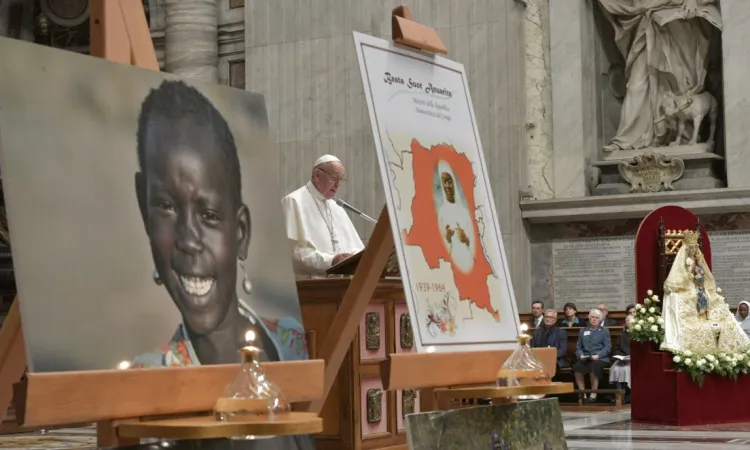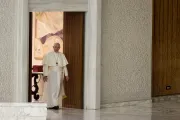Under Pope Francis, the diplomatic initiatives developed following this path of walking, praying and working together.
The first significant Pope Francis' diplomatic initiative was the day of fasting and prayer for the peace in Syria, and the Middle East summoned on Sep. 8, 2013.
Before the meeting, the then Archbishop Dominique Mamberti, in his capacity of Secretary for the Relations with the States (he is now a Cardinal and prefect of the Apostolic Signatura), met the corps of ambassador accredited to the Holy See and gave an overview of the Holy See position about the situation in the Middle East.
Pope Francis also promoted prayer for peace in the Middle East in the Vatican Gardens on June 8, 2014.
More in A Vatican Observer
Fr. Pierbattista Pizzaballa, who is now archbishop and administrator of the Latina Patriarchate of Jerusalem, was entrusted of preparing the meeting.
The late Israeli president Shimon Peres and the Palestinian leader Mahmoud Abbas were together with Pope Francis in the Vatican Garden. Also, Patriarch Bartholomew, I of Constantinople took part in the prayer.
The presence of Patriarch Bartholomew inaugurated a new season. Pope Francis understood that the moments of mutual commitments were also moments to show Christianity united and that a unified Christianity could be a real sign of peace for the world.
Pope Francis went to Lesbos on Apr. 16, 2016 and he was accompanied in the journey by Patriarch Bartholomew and with Archbishop Ieronymos II of Athens. The meeting had the scope to shed light on the refugees' crisis, but it was also an occasion to strengthen ecumenical ties based on a common interest.
Pope Francis trip to Lund, Sweden, on Oct. 31, 2016, was also the occasion for an ecumenical commitment. During that trip, Caritas Internationalis and the World Service of the Lutheran World Federation signed a declaration of intents to promote a partnership between the two organizations.
Last Apr. 4, Caritas Internationalis and World Service reaffirmed their commitment and discussed leveraging joint networks.
There was another day of prayer of peace, celebrated on Nov. 23, 2017. The event was dedicated to praying for peace in South Sudan and the Congo Democratic Republic. Unlike the 2013 event, this day of prayer was not preceded by a meeting with diplomatic corps.
(Column continues below)
Subscribe to our daily newsletter
The spiritual retreat for South Sudan is also a way to pursue this ecumenical strategy to achieve peace. The Holy See has set aside the diplomatic efforts, though
Archbishop Paul Richard Gallagher, Vatican "minister for Foreign Affairs," was in South Sudan from March 21 to March 25. He met with local authorities, encouraged the peace process, listened to the concerns of the bishops and informally tried to understand if there are conditions for a Pope Francis' trip in the country.
Months before, the Holy See had established a residential office in South Sudan, an office of the nunciature led by Monsignor Mark Kadima, that is residential chargée d'affairs in the country.
The retreat in the Vatican is something new. However, the Catholic Church has already a long tradition to put people together on the same table and to heal the wounds of conflict: the Commissions for Truth and Reconciliation, that have been very much successful in many countries, like South Africa and Colombia.
The retreat is however just a first step. Pope Francis is still longing to visit South Sudan. He will undoubtedly do when things are settled. The dialogue promoted in the Vatican can make the conditions favorable for a trip.



